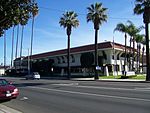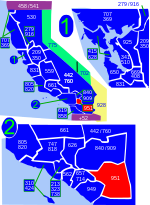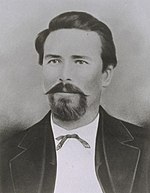Hemet Valley Mall
Hemet Valley Mall is a small indoor shopping mall in Hemet, California. It is located on West Florida Avenue (California State Route 74) between North Kirby Street and North Gilmore Street. It is anchored by J.C. Penney and Hobby Lobby, with one vacant anchor last occupied by Sears.The mall, which cost $10 million to build and opened on October 15, 1980, with 200,000 square feet (19,000 m2) of retail space. At opening it was anchored by a 50,400-square-foot (4,680 m2), $1.8-million Harris Company department store (later became Harris-Gottschalks in 1999) and a J.C. Penney, plus 40 specialty shops. Sears was then annexed to the mall in 1998 (relocated from standalone store.) Gottschalks closed in 2009 due to bankruptcy, which was first replaced by Forever 21, and later Hobby Lobby. Sears closed in 2020 as a plan of closing 40 stores nationwide.
Excerpt from the Wikipedia article Hemet Valley Mall (License: CC BY-SA 3.0, Authors).Hemet Valley Mall
West Latham Avenue,
Geographical coordinates (GPS) Address Nearby Places Show on map
Geographical coordinates (GPS)
| Latitude | Longitude |
|---|---|
| N 33.7487 ° | E -116.9957 ° |
Address
Hemet Valley Mall
West Latham Avenue
92543
California, United States
Open on Google Maps








